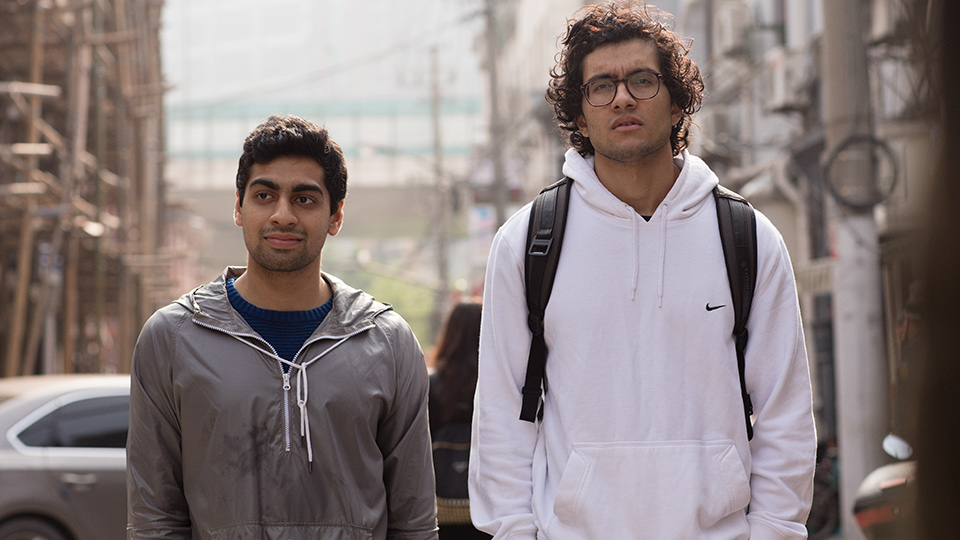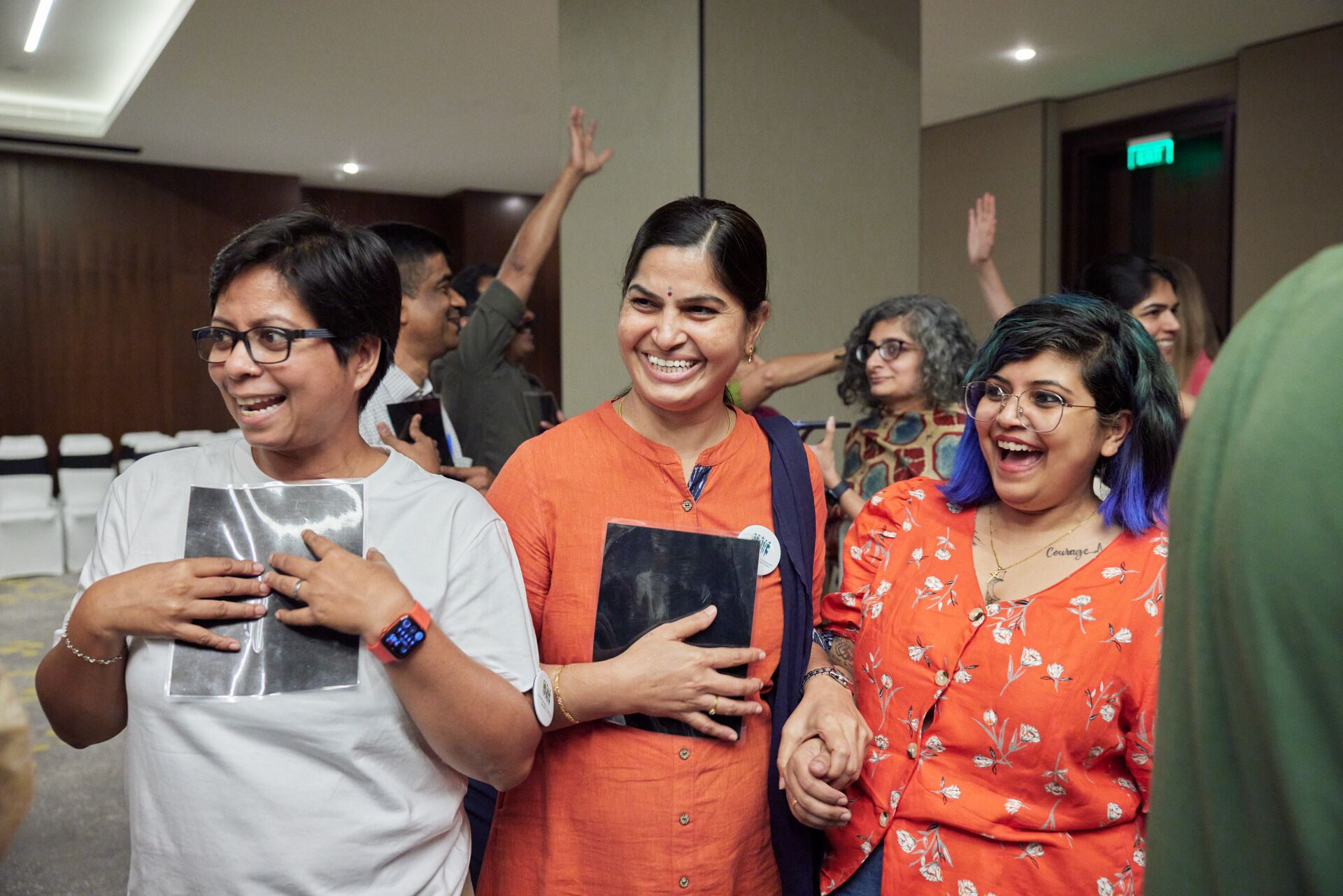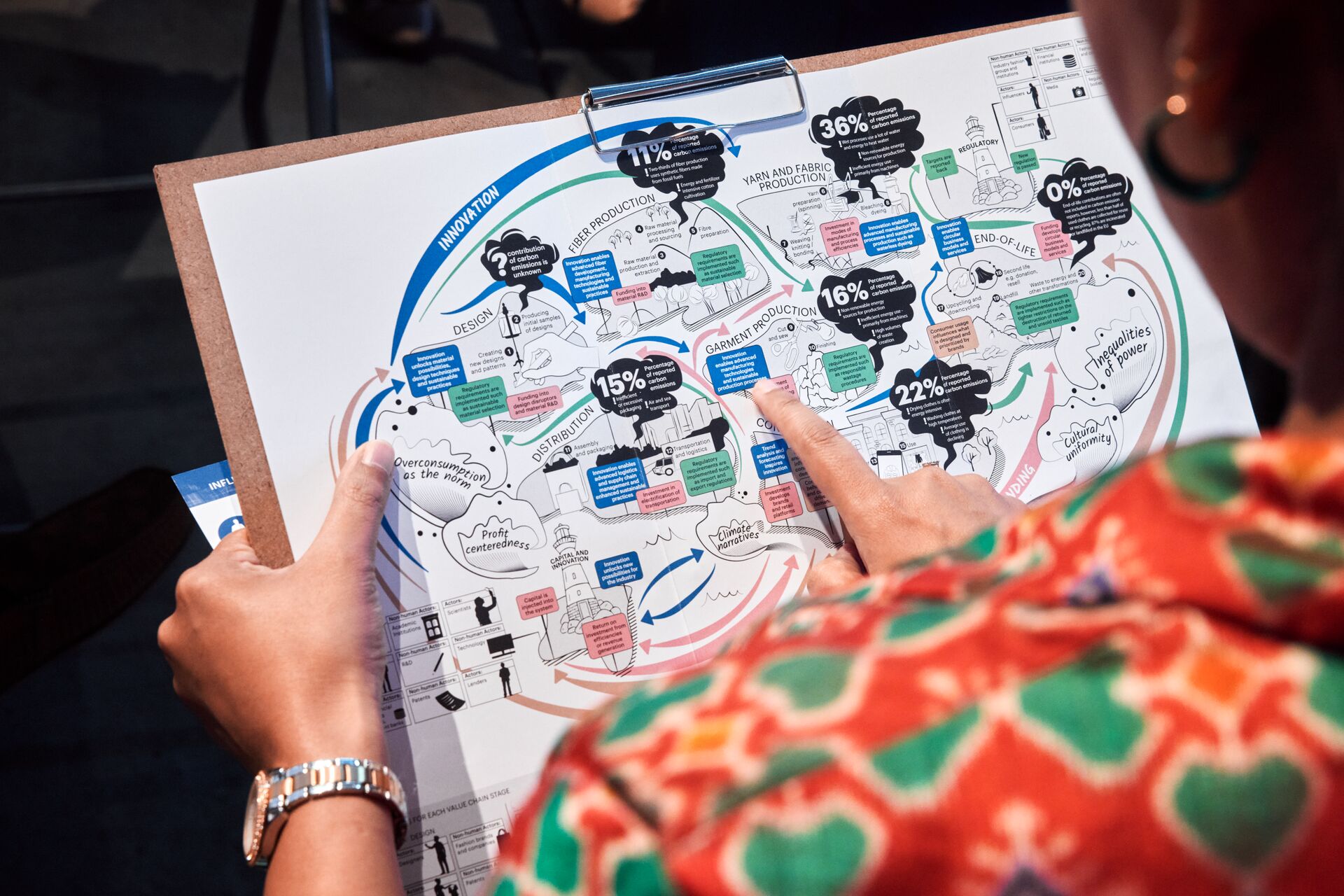How textile-to-textile recycling went from vision to future standard
When progress seems slow and headwinds feel strong, it’s worth reminding ourselves that every breakthrough started with a single experiment, every partnership with a first conversation, and every investment with someone brave enough to place the first bet. A decade ago, textile-to-textile recycling was still an emerging field – mechanical methods had been explored, but large-scale solutions for post-consumer and blended textiles were just beginning to take shape. Ten years on, it has evolved into a promising industry that’s attracting significant investments and partnerships with some of the world‘s biggest brands.

Akshay Sethi and Moby Ahmed of Ambercycle, GCA winners 2016.
When we announced the very first Global Change Award in 2015, textile-to-textile recycling was still in its early stages, especially for post-consumer and blended textiles. The development was mainly taking place in research labs and pilot projects.
However, an early breakthrough had already occurred in 2014, when Circulose unveiled a yellow dress made entirely from recycled jeans. The dress is considered the first garment produced from chemically recycled post-consumer textile waste, proving that the vision was possible to materialise into actual clothing, no different from those made from virgin materials.
From concept to commercial reality
In the last ten years, we’ve seen the idea evolve into an industry. Today, there’s a surge of budding companies around the world establishing massive production facilities, drawing multi-million-dollar investments, and presenting ambitious timelines to deliver millions of metric tons of recycled polyester, nylon, lyocell and elastane. This growth is further accelerated by new policies, like Extended Producer Responsibility (EPR) for textiles, creating stronger incentives for brands and manufacturers to invest in innovative solutions.
These are a few of the most promising companies currently scaling into industry-changing operations.
Ambercycle has scaled their chemical recycling technology for polyester textiles to commercial implementation, securing partnerships with major global brands including Inditex, Arc’teryx, Reformation, and Ganni. In 2022 alone, they diverted over 1,100 metric tonnes of textiles from landfills, demonstrating the growing commercial viability of their solution. Their goal is to divert a total of more than 4,500 metric tonnes of textile waste in 2025.
Circ’s technology for separating and recovering both polyester and cotton from blended textiles to create high-quality lyocell and polyester fibres has attracted significant investment from Breakthrough Energy, Inditex, and Patagonia, to name a few. The company plans to open a facility with the capacity to recycle 60,000 metric tonnes of textile waste annually, scaling to 300,000 metric tonnes by 2030.
Circulose operates the world’s first commercial-scale textile-to-textile recycling plant, transforming cellulosic textiles into dissolving pulp for new fibres. With 60,000 metric tonnes annual capacity, the company has a network of over 100 suppliers and partnerships worldwide and sees its fabric being used by a growing number of fashion brands including Ganni, H&M, Levi’s, & Other Stories, and COS.
Evrnu takes cotton-rich waste from the manufacturing process and discarded consumer fashion items to make lyocell fibre. Their first commercial manufacturing facility is underway and due to be completed in 2026. Once operational, it will produce 18,000 metric tonnes of fibre annually.
Infinited Fiber Company is building their first commercial plant with 30,000 metric tonnes annual capacity, which is enough fibre for around 100 million T-shirts. Their technology transforms cellulose-rich textile waste into a cotton-like fibre, with most future production capacity already sold out as they target 500,000 metric tonnes by 2030.
RE&UP Recycling Technologies has commenced operations in Turkey, targeting an annual recycling capacity of 200,000 metric tonnes by 2025. With ambitious plans to expand, they aim to scale their global recycling capacity to 1 million metric tonnes by 2030
Syre is scaling up textile-to-textile polyester recycling with plans for 10,000 metric tonnes production by 2026. Backed by major investors including TPG Rise, Volvo, and H&M Group (through a USD 600M offtake agreement), they’re targeting production of 3 million metric tonnes of circular polyester annually by 2032.
Imagine what the future holds
A decade ago, barely any of these companies existed, and if they did, they were still developing technologies in research labs. Today, they’re proving that sustainable solutions and profitable growth can align. These achievements didn’t happen by chance or goodwill alone, they’re driven by a powerful combination of market forces and policy frameworks.
Although tremendous progress has been made, fact remains: less than 1 percent of textiles are recycled into new clothing. But the business case for textile-to-textile solutions is gaining traction. New regulations like EPR schemes are creating clear market incentives, while growing demand for recycled materials is attracting significant investments. These innovative companies demonstrate how policy frameworks and commercial opportunities can align to accelerate industry transformation.
Discover more industry-changing solutions, meet all winners of Global Change Award.
It Matters by H&M Foundation
This article was part of our newsletter It Matters. Want to stay in the loop? Subscribe to our coming editions.
Newsletter – H&M Foundation



